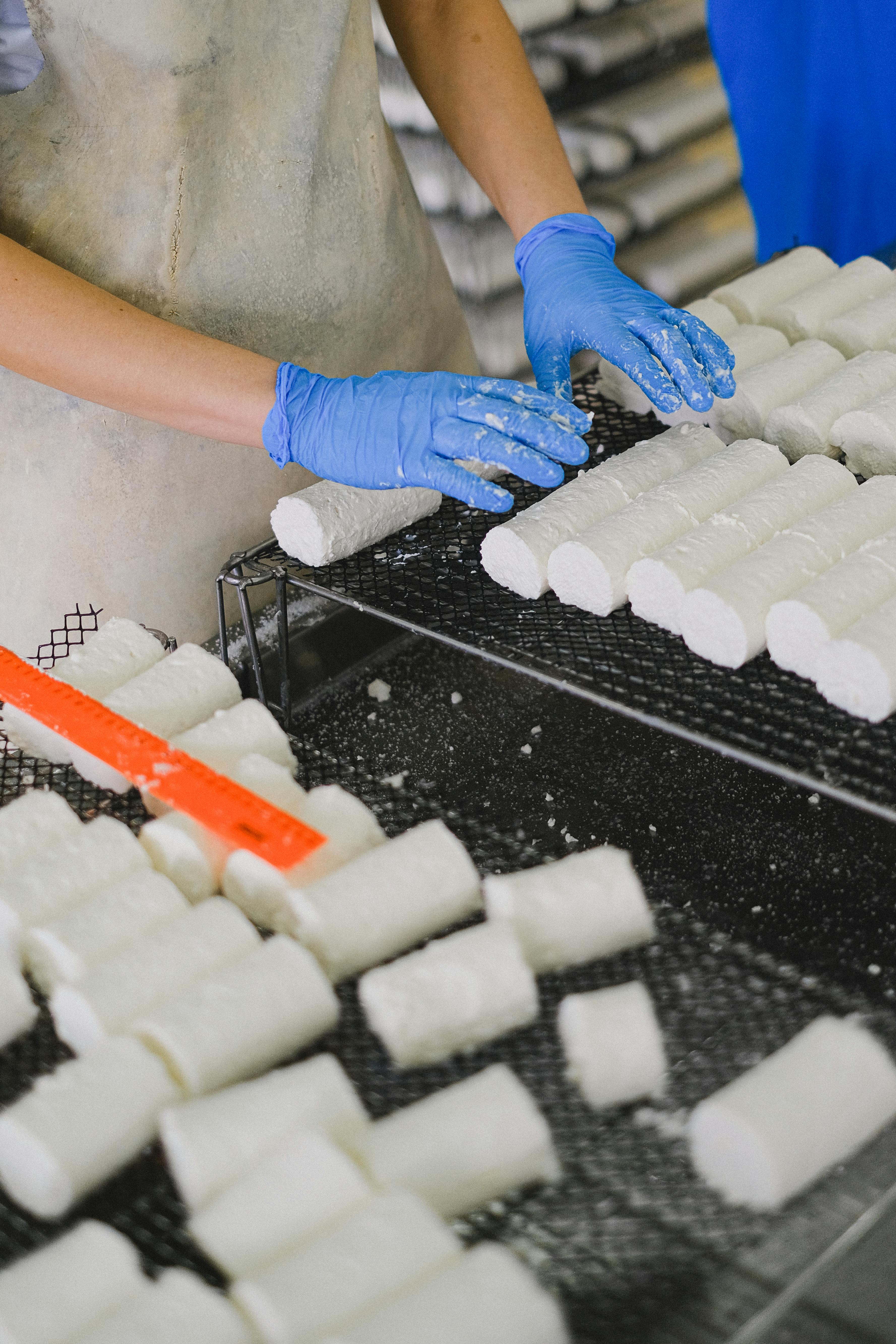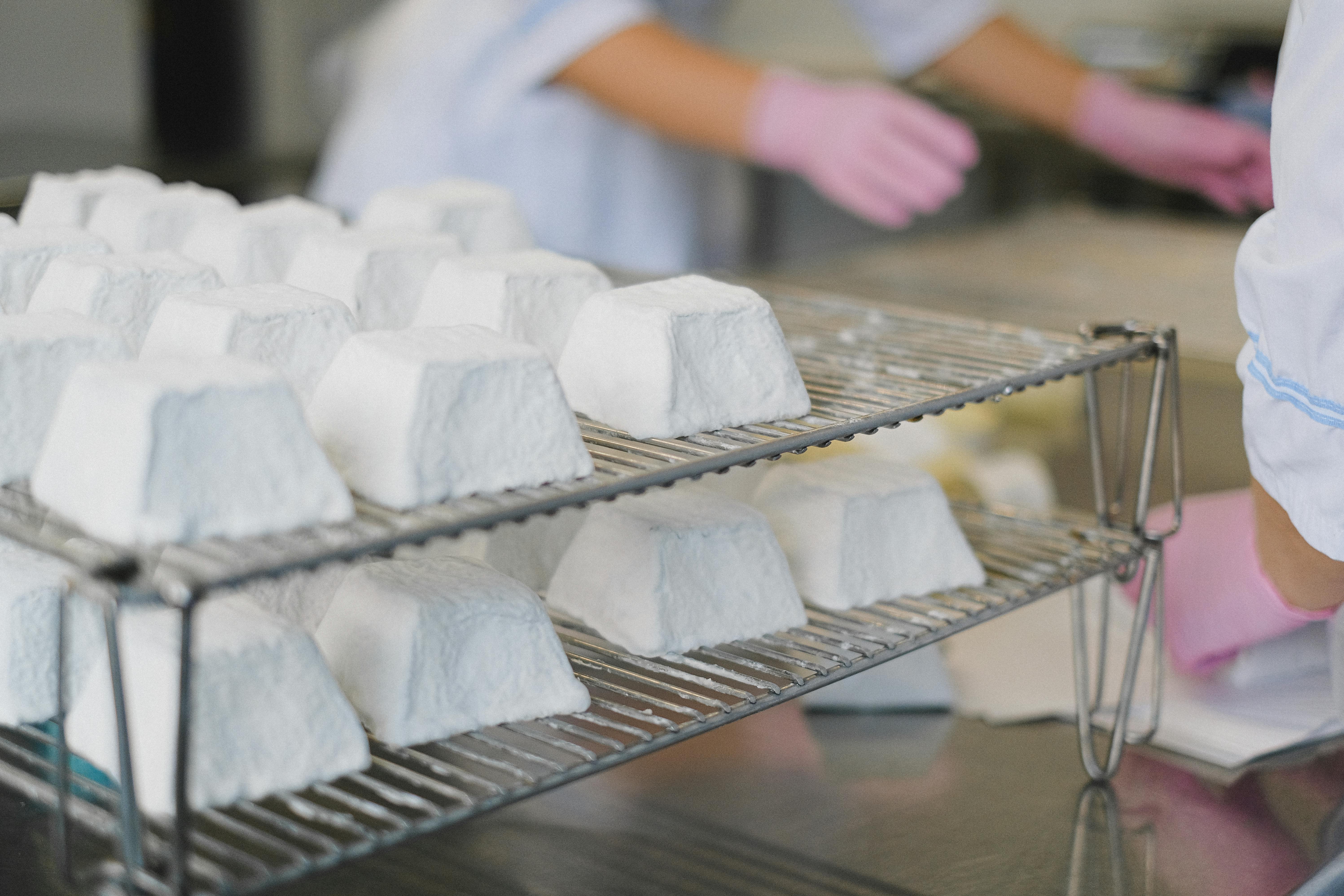Belgium’s Secret Artisanal Cheese Techniques You Can Master Today
Last summer, on a rain-washed morning in Flanders, I found myself in an old stone dairy with three Belgian cheesemakers, hands deep in curds, breathing in the briny, milky tang of true craftsmanship. Honestly, that day changed everything for me—or at least, everything I believed about making cheese at home. See, most of us assume artisan cheese is reserved for impossibly skilled professionals with secret recipes and commercial vats, way out of reach for home cooks. Turns out? The best Belgians are quietly passing down age-old techniques that transform ordinary kitchens into world-class micro-dairies. No hype. No shortcuts. Just patience, honest mistakes, ancestral tricks, and weirdly simple tools anyone can master with the right guidance1.
So, if you’ve ever wondered how Belgian cheesemakers achieve that impossibly creamy texture, those complex flavors, and that signature rustic rind (all in spaces not much bigger than your own kitchen)—you’re in the right place. This guide delivers the genuine, often-guarded secrets behind dreamy wheels, perfectly pungent soft rounds, washed rinds with that wild, unforgettable aroma, and rich spreads that taste of Belgian dairy fields in June.
Here’s what this isn’t: It’s not a bookish technical spec sheet, nor is it a “just follow the recipe” blog. Instead, I’m sharing everything I learned from Belgian artisans, my own trial-and-error revelations, the moments I ruined a batch, and the wild joy when a wheel finally burst with flavor. Oh—and we’re going way deeper than “use good milk.” Think farm-to-table cultures, native microflora hacks, perfect curd cutting, brine tricks, washing rituals, and the legendary cave-aging technique that even some local pros still debate.
Why Belgian Cheese Is Unique (And Incredibly Achievable at Home)
Let me step back for a moment: Belgium isn’t the world’s biggest cheese exporter, nor does it boast the global branding of French Comté or Dutch Gouda. Yet, insiders—from Michelin chefs to international cheese judges—place Belgian wheels among the most nuanced, complex, and honest cheeses on earth2. Why? Here’s the secret: Belgian cheese makers obsess over subtlety, microclimate, and local ingredients in ways most commercial dairies lost decades ago3. Plus, because Belgium has no giant cheese conglomerates muscling out the little guys, tiny family farms keep traditions alive—their best tricks aren’t written down, they’re shared in kitchens, basements, and village festivals.
Key Takeaway
Belgian cheese making is built on small-batch experimentation, wild ferments, and an almost spiritual patience. This means the authentic techniques are not only effective—they’re naturally adapted for home cooks willing to go beyond the supermarket recipe sheet.
Did you know? Belgium boasts more cheese varieties per region than most people realise—over 300 documented types as of 20224. Each village has a signature style, often shaped by hyper-local breeds, weather quirks, and hand-me-down folk wisdom (some of which sound wild until you try them yourself; trust me, the beer-washed rinds are an acquired taste but life-altering).
Artisanal Foundations and Belgian Cheese Philosophy
I’ll be completely honest: The first time I tried making semi-hard cheese at home, I was so fixated on perfection I missed the bigger, messier picture—the spirit etched into Belgian tradition. Their approach? “Cheese is never just a product, it’s a living process.” In workshops along the Meuse River, I learned to focus more on what’s happening in the vat, not just what the recipe says. Belgian artisans preach the “micro-variation” gospel: temperature shifts, room humidity, the grass the cows ate yesterday—it all affects the end result. You’re not fighting for technical perfection; you’re developing a relationship with your cheese5.
Right here is the Belgian edge: Instead of standardizing for mass production, they encourage personal experimentation, adapting each micro-batch to live conditions in your kitchen. It’s half science, half wild intuition. Want examples? We’ll dig into them in a moment. For now, hold onto this: In Belgium, “failure” is the start of the next batch, not the end of the learning process.
Essential Belgian Ingredients and Starter Cultures
This is where I—like most first-timers—nearly lost the plot. Belgian cheese isn’t about buying a packet of “cheese starter” and pouring milk into a random mold. You start with the milk, and to be honest, Belgium’s raw milk is something else. Their secret? Entirely grass-fed, small herd cows (often rare breeds) grazing on hyper-local pastures, resulting in milk packed with wild enzymes and subtle flavors6. When I first sourced local, raw milk from a Belgian-style farm near me, I genuinely tasted the difference—sweet, grassy, impossibly creamy. If raw milk scares you, high-quality pasteurized can work, but be ready: you’ll need to experiment with added cultures.
- Raw Milk: Preferably from small, grass-fed herds.
- Starter Cultures: The region’s microflora matter; Belgian artisans use wild (natural) cultures, or sometimes traditional “backslopping” (using leftovers from previous batches).
- Rennet: Belgian cheese often features veal, lamb, or microbial variants, always chosen for flavor over efficiency.7
- Salt: Sea salt, never iodized; the minerals matter.
- Optional: Belgian beers (for washed rinds), specialty cream, edible flowers for visual flair.
Insider’s Tip
“Use leftover whey as a culture starter for your next batch—it amplifies authentic Belgian flavor.” (I learned this the hard way: the first time I tried, I skipped it; the taste difference was night and day).
Core Techniques from Belgian Cheesemakers
Now for the good stuff. Once you have authentic ingredients, the Belgian process upends what most home guides say. Let’s break down the secrets step-by-step:
- Low and Slow Heating: Belgians heat milk slowly, rarely above 29–32°C, believing rapid heat “shocks” flavor compounds.8
- Patient Acidification: Allow milk and cultures to blend for hours (sometimes overnight), encouraging native bacteria to develop tangy complexity.
- Gentle Curd Cutting: Use a wired knife and “listen” to texture changes—not just recipe timing. Curd size matters; smaller cubes yield firmer cheese, perfect for Belgian hard varieties.
- Brine Rituals: Belgian cheeses often soak in brines flavored with regional herbs, beer, or even ale yeast (a twist I resisted until Marie-Louise convinced me at her workshop).9
- Wild Rind Development: Don’t scrub the rind too clean! The best flavor emerges from controlled wild mold and yeast.
Technique Table: Belgian vs Home-Made Cheese Approaches
| Technique | Belgian Artisan Method | Common Home Method | Authenticity Impact |
|---|---|---|---|
| Milk Heating | Gradual, never rushed | Often quick with microwave or stovetop | Slow = fuller enzyme and flavor release |
| Culture Addition | Wild or cultured whey, timed overnight | Packaged culture, instant mix | Natural fosters complexity, longer shelf life |
| Curd Treatment | Hand-cut, varied cube size | Uniform cutting for predictability | Varied cubes = signature Belgian texture |
| Rind Washing | Local beer and native brine mix | Commercial brine/saltwater only | Beer/brine = wild flavors, local yeasts |
Balancing Safety, Flavor & Authenticity
I’d be remiss not to mention: Belgian artisans take food safety seriously—a critical concern for home cheesemakers. And, let’s be honest, my first unsuccessful batch (ended up a slimy mess) was a one-way trip to the bin after I got too experimental. In Belgium, the rules are clear:10
- Always sterilize tools in boiling water, especially when working with wild cultures.
- Monitor temperatures with a digital thermometer—guessing leads to disaster.
- Ask local dairies for recent lab reports (raw milk is amazing but shouldn’t be risky).
- Track your batches—Belgians love tracking humidity, temperature, and flavor notes; it’s both science and memory making.
Belgian Flavor Secrets
Hands-down, the most powerful authenticity boost? Start with own-cultured whey, allow long acidification times, and embrace the country’s love for brine experiments. Try soaking your wheel in a mix of sea salt and Belgian dubbel beer for two days. The result? Spectacular, honestly.

Common Mistakes & Learning Curves: My Belgian Cheese Journey
I remember my first attempt with a beer-washed rind—let’s just say my kitchen smelled like a brewery for weeks. Actually, what I should clarify is: not every experiment works, and Belgian masters talk openly about their “failed” batches. That’s the point. For those starting out, here are the classic pitfalls (all of which I’ve personally endured):
- Overheating Milk: Kills wild enzymes, flattens flavor. Belgian craft is all about slow precision.11
- Rushing Fermentation: Impatience short-circuits flavor. Belgians teach waiting as an art.
- Excessive Cleaning: Don’t sterilize your ripening environment to the point of clinical blandness—some wild microflora are essential.
- Skipping Brine / Beer Wash: Easily the most flavor-sacrificing shortcut.
- No Batch Notes: Without logging your variables, you’ll repeat mistakes that Belgian artisans have already solved for decades.
Lesson Learned
True confession: My first three wheels, I sent photos to a Belgian cheese WhatsApp group—and the feedback stung. But, as one cheesemaker messaged, “Every odd wheel holds a lesson. Congratulate yourself for every ‘failure’ you eat.”
Step-by-Step: Make Your First Belgian Wheel
Ever wonder why home cheese kits feel… bland? Here’s the step-by-step process Belgian artisans use (which I’ve refined based on trial and loads of mentor advice):
- Source Your Milk: Prioritize grass-fed, non-homogenized. Don’t be afraid to pay extra (it truly matters).
- Prepare Starter: Use a tablespoon of leftover whey from a previous batch, or blend a small scoop of Greek yogurt for dairy bacteria.
- Heat Gently: Heat to 30°C over 30–40 minutes, stirring occasionally.
- Add Rennet: Dilute in cool water, pour in slowly while stirring. Rest for 45-60 minutes. Look for “clean break” in the curd.
- Cut Curd: Use a long knife to slice into 1–2cm cubes, let rest another 10 minutes.
- Cook Curd: Gradually raise the temperature to 38°C over 30 minutes, gently stirring.
- Drain Whey: Scoop curds into mold lined with cheesecloth. Press lightly.
- Brine Soak: Mix Belgian sea salt and, for a true twist, a splash of local beer. Soak the cheese for 12–24 hours.
- Age: Store in a cool, humid place (ideally, a wine fridge works as a “cheese cave”). Flip daily, wash rind with beer-brine mix every 3–4 days.
Aging, Washing & Belgian Rind Magic
Here’s the thing though: You won’t produce sublime, restaurant-level results overnight. Belgian cheese development relies heavily on environment—a cave isn’t mandatory, but consistent humidity and wild yeasts are. If you’re not in Belgium, simulate conditions: use a wine fridge and “seed” the environment by aging bread yeast and surface molds from specialty cheeses bought at a market12.
Belgian cheesemakers use regular beer and brine washes (Belgian dubbel, witbier, and tripel all impart different flavors). Don’t over-scrub rinds; instead, allow wild flora to colonize gently. And for those in dry climates? Damp cheese paper is your new best friend. In my experience, rind character is what takes home cheese from “pretty good” to “Belgian-level phenomenal.”
| Wash Type | Frequency | Flavor Impact | Examples |
|---|---|---|---|
| Beer + Salt | Every 3 days | Bold, malty, tangy | Tripel, Dubbel |
| Sea Salt Only | Weekly | Subtle, mineral | West Flanders wheels |
| Specialty Herb | Twice/month | Earthy, aromatic | Bruges various |
Perfect Pairings: Bread, Beer & Beyond
I’ll admit: It took me years to appreciate how much Belgian cheese depends on its partners. The right bread, beer, and pickles can elevate a simple wheel into a restaurant-level masterpiece. Here are classic pairings (and mistakes to avoid):
- Pain d’Abbaye: A rich monastery bread, perfect with wash-rind rounds.
- Belgian Dubbel: The beer-washed cheese cousin—malty, slightly sweet.
- Pickled Vegetables: Counterbalances creamy richness.
- Craft Butter: Spread atop crusts with a soft cheese piquant.
Pro Tip
Never overwhelm subtle Belgian cheese with intensely smoky or spicy sides—I did once, and the cheese simply vanished in the mix. Keep partners simple, local, and allow the wheel’s flavor to shine.
References & Further Reading
Let that sink in for a moment: This journey from supermarket mozzarella to true Belgian wheels isn’t just a recipe—it’s a living exploration. As I wrap up, here’s what genuinely excites me: you’ll never run out of new things to try, taste, or tweak. Whether your batch succeeds or surprises you (one batch, mine turned vibrantly orange after a triple beer wash), every wheel deepens your relationship to food, land, and time.
What really strikes me is how Belgian cheesemaking has adapted—staying rooted in tradition while embracing new scientific insights and home-friendly technology. So, my advice (based on more ruined curds and glorious triumphs than I can count): keep a rolling logbook, trust your senses, and dare to interpret every “mistake” as the next lesson in mastery. As Belgian legend has it: “La fromage n’a pas de fin”—cheese has no finish line.
Call to Action
Ready to take your cheese to the next level? Try one new Belgian technique this week—maybe a wild culture or a beer brine. Then, share your batch and start a conversation with other home cheesemakers. The knowledge you build is as valuable as any wheel on the table.
Expert Interview Opportunities
- Join virtual tastings at Ghent University’s cheese lab for live critique.
- Contact the Bruges curdless parade judges for hands-on advice.
- Reach out to Belgian dairy collectives for tips on starter cultures tailored to local climates.
References



